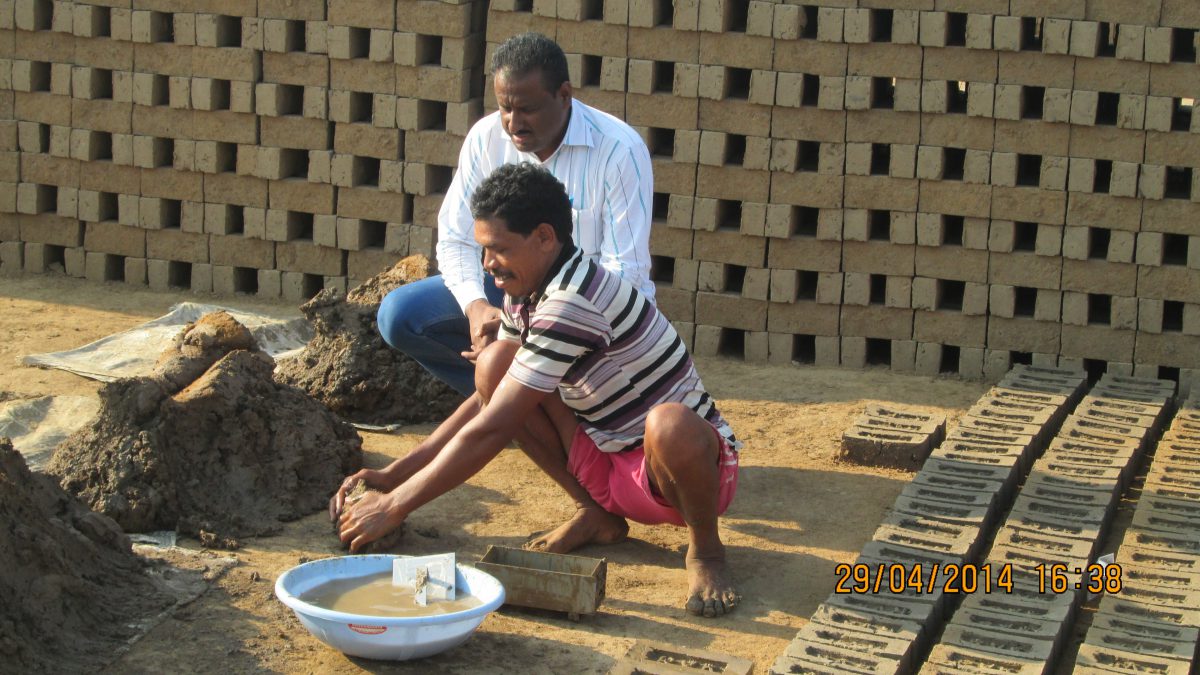Sanjaya Kumar Mishra is a poet of repute. Based in Balangir he writes in Odia, Koshli and English. His published works include five poetry collections, one short story in Koshli language and one novel in Odia language.
The forty-four year old poet has chosen poetry as the medium to depict poverty, pathos and hunger of Balangir. In his writings Mishra focuses mostly on the deprivation, poverty, distressed migration and the other socio-cultural plights and pathos of the migrant community. Crop failure, failure of entitlement and other dimensions of rural poverty forms an integral part of his poems.

Mishra has been writing poems for the last two decades. His odia poetry collection Agantuka (1999), Bhangi padiba Agaru(2006) and Dhasa(2010) and Koshli poetry collection Maraguda (2006) , Chereguda (2017)published and won appreciation. The title of the book MARAGUDA , which means lost civilization, talks about the flora, fauna, folk tradition, culture, local beliefs and customs, folk gods and goddess in a lively manner. His piece on Hirakud dam in the same collection has been widely acclaimed. His novel ‘Dadana Sundari’ is a masterpiece. The book is already translated in Hindi language by Padmashree Dr Srinivas Udgata and got a wide appreciation. We talked to the poet to more about his works. Excerpts:
How the young Sanjaya became interested on migration?
I did not have any concrete career planning for me. After completion of M Phil I wanted to do something for the downtrodden. I was not interested for a conventional life. After reading about hunger, starvation death and famine in the newspapers I decided to dedicate myself towards the upliftment of these oppressed people. Accordingly I shifted my base to Kantabanji in 1998 and started working on this noble cause. Some of my friends I wasted my career and someother felt I am doing good. As a poet it was always my priority to work for these people and act as their mouthpiece to vent their unspoken words to bring changes in their lives.
What is the present scenario?
Even today human suffering is quite high. Poverty, malnutrition and drought still loom large in the region. Lack of education and poor quality of education and child marriage are some of the endemic issues which largely affect the migratory labourers’ lives in western Odisha. My focus area of working is to fight against hunger and distress migration.
How plight of the labourers is reflected in your works?
I write, what I see and experience. My literary works and the characters are the reflections of my own experience. My socialization and interaction with this people give me literary insights. Often I put these characters, situations and issues as they are. They emerge as characters and issues as literary types and at times they get realistic treatment in my works. Many woman characters who are crushed under the torment of distress migration and poverty, always keep disturbing me and I prefer to pick them up as the fictional characters in my works. I write about the pathos of the suffering, and exploited lot of the society. I write about them because without that I cannot survive.
I would like to specifically mention about the character Urmila, wife of a migrant labour. She takes care of her old in-laws while her husband and elder-brother-in-law’s family migrate. Her character is synonymous to the mythological character Urmila, wife of Laxman, who lives back at home while her husband proceeds for hermitage along with elder brother lord Rama and his wife Sita.

Can one person bring change to such a huge issue?
As I have already mentioned my priority is to work for the vulnerable sections of the community and highlight their problems. I never feel lonely at any point of time. I get support from like-minded individuals and organization for all these issues.
And yes, even one man can bring change in the society. I don’t claim that one man is sufficient. The problem is so huge that though one man can create sensitization he cannot change the mindset. However, when you work for a noble cause it is obvious that you get support from all quarters. Moreover, there are people, especially young people who are trying to maintain the momentum. And maintaining the momentum is quite crucial in this issue.
What is the main problem in the absolute eradication of the issue?
We need to differentiate between migration and distressed migration. The issue that I raise is distress migration which is a kind of virtual bondage. We cannot say that there has been no change. There was a time when the administration was not prepared to accept this as an issue, as a problem. But due to continued sensitization, lobby and advocacy through even literature, now this is acknowledged as an issue. This is certainly a big change of mindset in this regard. The government is now at least trying to work for these people.
How have you helped the victims of migration?
I always help them through highlighting their plights. I also work for their rescue and more importantly their rehabilitation which normally remains a neglected sector. And I also try to link their children with good quality education and health facilities.
What is the basic thing to curb the issue?
It is certainly a difficult question. But yes in my opinion improving the livelihood base of the people, proper implementation of welfare schemes and changing the mindset of migrants as well as the policy makers is always important.
Also read: Bamboo queen at Baliyatra




 Ms Kalinga
Ms Kalinga